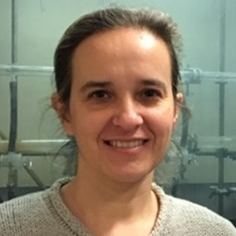Recent Advances in Dye-Sensitized Solar Cells
A special issue of Molecules (ISSN 1420-3049). This special issue belongs to the section "Materials Chemistry".
Deadline for manuscript submissions: closed (30 November 2020) | Viewed by 47259
Special Issue Editors
Interests: coordination complexes; luminescent compounds; nonlinear optical materials; DSSCs
Special Issues, Collections and Topics in MDPI journals
Interests: synthesis; coordination chemistry; organic chemistry; solar cells; dyes; electrolites; luminescent complexes; OLEDs; nonlinear optics; bio-imaging; photodynamic therapy
Special Issues, Collections and Topics in MDPI journals
Special Issue Information
Dear Colleagues,
One of the biggest contemporary challenges of humanity is to replace fossil fuels with renewable energy sources in order to meet the rising worldwide energy demand and minimize negative environmental and climate effects. The Sun is a clean, abundant, and cheap energy source, able to play a key role in future society.
Dye-sensitized solar cells (DSSCs) are considered a realistic solution for harnessing the energy of the Sun and converting it into electrical energy.
DSSCs have attracted a great deal of attention because they offer good power conversion efficiency, ease of fabrication, and short energy payback time with potentially lower costs, making them one of the most promising alternatives to conventional photovoltaic devices.
We cordially invite researchers to submit their work (original research paper, a short communication, or a focus review) on the fascinating world of dye-sensitized solar cells to this Special Issue of Molecules.
Prof. Dr. Claudia Dragonetti
Dr. Alessia Colombo
Guest Editors
Manuscript Submission Information
Manuscripts should be submitted online at www.mdpi.com by registering and logging in to this website. Once you are registered, click here to go to the submission form. Manuscripts can be submitted until the deadline. All submissions that pass pre-check are peer-reviewed. Accepted papers will be published continuously in the journal (as soon as accepted) and will be listed together on the special issue website. Research articles, review articles as well as short communications are invited. For planned papers, a title and short abstract (about 100 words) can be sent to the Editorial Office for announcement on this website.
Submitted manuscripts should not have been published previously, nor be under consideration for publication elsewhere (except conference proceedings papers). All manuscripts are thoroughly refereed through a single-blind peer-review process. A guide for authors and other relevant information for submission of manuscripts is available on the Instructions for Authors page. Molecules is an international peer-reviewed open access semimonthly journal published by MDPI.
Please visit the Instructions for Authors page before submitting a manuscript. The Article Processing Charge (APC) for publication in this open access journal is 2700 CHF (Swiss Francs). Submitted papers should be well formatted and use good English. Authors may use MDPI's English editing service prior to publication or during author revisions.
Keywords
- Dye-sensitized solar cells
- Dyes
- Redox mediators
- Power conversion efficiency
- Light harvesting







